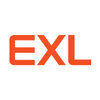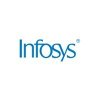Accounts Payable Executive
100+ Accounts Payable Executive Interview Questions and Answers

Asked in EXL Service

Q. Verify valdate invoice , All transaction code explain step by step
Validating and verifying invoices by explaining all transaction codes step by step.
First, review the invoice for accuracy and completeness.
Next, match the invoice to the purchase order and receiving report.
Then, enter the invoice details into the accounting system using the appropriate transaction code.
Finally, reconcile the invoice with the vendor statement to ensure all payments are accounted for.
Example: Transaction code 101 may represent a standard invoice entry, while co...read more
Asked in Soubhik Exports

Q. What are the accounting journal entries for payable and receivable accounts, including GL reconciliation?
Journal entries for payable and receivable accounts with GL reconciliation
Journal entry for accounts payable: Debit accounts payable, credit cash/bank
Journal entry for accounts receivable: Debit cash/bank, credit accounts receivable
GL reconciliation involves matching transactions in the general ledger with corresponding entries in subsidiary ledgers
Ensure accuracy by reconciling balances, investigating discrepancies, and making necessary adjustments

Asked in TCS

Q. What is P2P and its flow?
P2P stands for Procure-to-Pay, which is the process of requisitioning, purchasing, receiving, paying for, and accounting for goods and services.
P2P involves the entire procurement process from start to finish.
It starts with a requisition for goods or services, followed by the purchase order, receipt of goods or services, invoice processing, and payment.
The final step is accounting for the transaction in the company's financial records.
P2P helps streamline the purchasing proce...read more

Asked in HCLTech

Q. What is your understanding of Order to Cash (O2C)?
O2C stands for Order to Cash, which is the process of receiving and fulfilling customer orders.
O2C involves receiving customer orders, processing them, fulfilling the orders, and receiving payment.
It includes steps such as order entry, order fulfillment, invoicing, and payment collection.
Efficient O2C processes help improve cash flow and customer satisfaction.
Example: A customer places an order online, the order is processed, the product is shipped, and the customer pays for ...read more

Asked in Genpact

Q. What are the different types of purchase orders?
Purchase orders can be categorized into standard, blanket, contract, and planned types.
Standard purchase orders are used for one-time purchases of goods or services.
Blanket purchase orders are used for recurring purchases of goods or services within a specific period.
Contract purchase orders are used for purchases made under a long-term contract with a supplier.
Planned purchase orders are used to plan future purchases based on anticipated needs.
Each type of purchase order ser...read more

Asked in Invensis Technologies

Q. What do you mean by bank reconciliation?
Back reconciliation refers to the process of verifying and correcting discrepancies in financial records to ensure accuracy.
Back reconciliation involves comparing financial records with bank statements to identify any discrepancies.
It is important to investigate and resolve any differences found during the reconciliation process.
Back reconciliation helps ensure that all transactions are accurately recorded and accounted for.
Examples of back reconciliation tasks include matchi...read more
Accounts Payable Executive Jobs




Asked in Accenture

Q. What is the P2P (Procure-to-Pay) cycle?
The P2P cycle refers to the process of procuring goods or services from a vendor, receiving and approving the invoice, and making payment.
The cycle starts with the procurement of goods or services from a vendor.
Once the goods or services are received, the invoice is generated and sent to the accounts payable department for approval.
After the invoice is approved, payment is made to the vendor.
The cycle ends with reconciliation of the payment with the invoice and recording the ...read more

Asked in Wipro

Q. What is the PTP (Procure-to-Pay) cycle?
The PTP cycle refers to the process of procuring goods or services, receiving them, and paying for them.
The cycle starts with the need for goods or services, followed by the creation of a purchase order.
Once the goods or services are received, an invoice is generated and matched with the purchase order.
The invoice is then approved for payment and processed for payment.
Finally, the payment is made to the vendor or supplier.
The PTP cycle helps ensure that goods or services are ...read more
Share interview questions and help millions of jobseekers 🌟


Asked in Axis Clinicals

Q. What is the process for filing GST and TDS?
Filing GST and TDS involves systematic steps to ensure compliance with tax regulations.
1. Gather necessary documents: invoices, payment receipts, and tax challans.
2. For GST, calculate the total GST collected and paid during the period.
3. File GST returns (GSTR-1, GSTR-3B) online through the GST portal by the due date.
4. For TDS, ensure all deductions are accurately calculated based on applicable rates.
5. File TDS returns (Form 24Q, 26Q) quarterly, and ensure payment of TDS t...read more

Asked in KHD Humboldt Wedag

Q. When is TDS deducted?
TDS is deducted when certain payments are made, such as salary, rent, professional fees, etc.
TDS (Tax Deducted at Source) is deducted by the payer at the time of making certain payments.
It is deducted to ensure that the government receives tax revenue in advance.
TDS is applicable on various payments like salary, rent, professional fees, commission, interest, etc.
The deducted TDS amount is then deposited with the government by the payer.
The recipient of the payment can claim t...read more

Asked in Wipro

Q. How many types of accounting principles are there?
There are several types of accounting principles that guide financial reporting and accounting practices.
Generally Accepted Accounting Principles (GAAP): A framework for financial reporting in the U.S.
International Financial Reporting Standards (IFRS): Standards for financial reporting used internationally.
Cash Basis Accounting: Recognizes revenues and expenses when cash is exchanged.
Accrual Basis Accounting: Recognizes revenues and expenses when they are earned or incurred, ...read more

Asked in Cipla Health

Q. How do you make a payment in SAP?
To make a payment in SAP, follow these steps:
Create a vendor invoice
Enter payment details
Post the payment
Verify payment status

Asked in V5 Global Services

Q. What is deferred revenue expense, and can you provide an example?
Deferred revenue expense is when a company receives payment for goods or services that will be delivered in the future.
Deferred revenue is a liability on the balance sheet
The revenue is recognized as earned when the goods or services are delivered
Examples include magazine subscriptions, software licenses, and prepaid rent
Deferred revenue expense is the cost associated with delivering the goods or services
It is recognized as an expense when the revenue is recognized as earned

Asked in Genpact

Q. What are 2-way and 3-way matches?
2-way match verifies invoice against purchase order; 3-way match adds receipt of goods for accuracy.
2-way match involves comparing the invoice with the purchase order.
Example: If a company orders 100 units of a product and receives an invoice for 100 units, it matches.
3-way match includes the invoice, purchase order, and receipt of goods.
Example: If the company receives 100 units and the invoice is for 100 units, all three documents must align.

Asked in Genpact

Q. What is the three-way matching process?
3 way process is a method of matching purchase orders, receiving reports, and vendor invoices.
It ensures that the goods or services ordered were received and the invoice matches the purchase order and receiving report.
If all three documents match, the invoice is approved for payment.
If there are discrepancies, the invoice is sent back to the vendor for correction.
This process helps prevent overpayment and ensures accurate financial records.
For example, if a company orders 100...read more

Asked in Livpure

Q. Why is there a need to make a provision?
Provisions are made to account for potential future expenses or losses that are uncertain but probable.
To account for potential future expenses or losses that are uncertain but probable
To ensure accurate financial reporting
To comply with accounting standards and regulations
To prevent understating liabilities or overestimating profits
To reflect a true and fair view of the company's financial position
Examples: Provision for bad debts, provision for warranty expenses

Asked in Genpact

Q. Can you provide some examples of Accounts Payable entries?
Accounts payable entries track money owed to suppliers for goods and services received.
Invoice Entry: Recording an invoice from a supplier for office supplies.
Payment Processing: Making a payment entry for a utility bill.
Accruals: Recognizing expenses for services received but not yet invoiced, like consulting fees.
Vendor Credits: Recording a credit note received from a vendor for returned goods.
Asked in Soubhik Exports

Q. Freight charges entry with debit and credit note adjustment
Freight charges entry involves adjusting debit and credit notes for accurate accounting.
Freight charges are typically recorded as an expense in the accounts payable ledger.
Debit notes are used to increase the amount owed to a vendor for additional charges, while credit notes decrease the amount owed.
Adjustments for freight charges may involve correcting errors in the original entry or accounting for discounts or refunds.
Proper documentation and communication with vendors are ...read more

Asked in Ags Infotech

Q. What types of queries would you expect to see?
Accounts Payable Executive would see queries related to invoices, payments, vendor accounts, and discrepancies.
Queries related to invoice processing and approvals
Payment status inquiries from vendors
Vendor account reconciliation questions
Discrepancies in invoice amounts or terms
Requests for duplicate invoices or payment proofs

Asked in Sebros Industries

Q. What is a PO-based invoice?
A PO based invoice is an invoice that is generated based on a purchase order issued by a buyer to a supplier.
A PO based invoice is created when a buyer places an order with a supplier and a purchase order is issued.
The invoice is generated based on the details mentioned in the purchase order.
It helps in ensuring that the goods or services received match the order placed.
PO based invoices are commonly used in business transactions to maintain proper documentation and control o...read more

Asked in Genpact

Q. What is Reconciliation?
Reconciliation is the process of comparing two sets of records to ensure they are in agreement.
It involves identifying and resolving discrepancies between the two sets of records.
Examples include bank statement reconciliation, accounts receivable reconciliation, and inventory reconciliation.
Reconciliation helps ensure accuracy and completeness of financial records.
It is an important internal control measure to prevent fraud and errors.
Reconciliation should be performed regula...read more

Asked in Genpact

Q. What is the difference between a purchase order and an invoice?
A purchase order (PO) is a document issued by a buyer to a seller, indicating the types, quantities, and agreed prices for products or services. An invoice is a document issued by a seller to a buyer, requesting payment for products or services provided.
A purchase order is created by the buyer and sent to the seller as a request for goods or services.
An invoice is created by the seller and sent to the buyer as a request for payment.
A purchase order is issued before the goods ...read more

Asked in Accenture

Q. What is bad debt?
Bad debt refers to money owed by a debtor that is unlikely to be paid back, resulting in a loss for the creditor.
Bad debt is typically the result of customers defaulting on their payments.
It is recorded as an expense on the creditor's financial statements.
Companies may write off bad debts to remove them from accounts receivable.
Examples include unpaid invoices, loans that are not repaid, and credit card debt that goes into default.

Asked in OLX

Q. Golden rules of accounting, general basic concepts of accounting
Golden rules of accounting are basic principles that guide the process of recording financial transactions.
The three golden rules of accounting are: Debit the receiver, Credit the giver; Debit what comes in, Credit what goes out; Debit expenses and losses, Credit income and gains.
Double-entry accounting system is based on these rules to ensure accuracy and balance in financial records.
For example, when a company receives cash from a customer, the cash account is debited (incr...read more
Asked in Agile Capital Services

Q. What are debit notes and credit notes?
Debit notes and credit notes are documents used in accounting to adjust transactions between buyers and sellers.
A debit note is issued by a buyer to the seller, indicating a return of goods or a request for a reduction in the amount owed.
Example: A company returns defective goods to a supplier and issues a debit note for the value of those goods.
A credit note is issued by a seller to the buyer, acknowledging the return of goods or a reduction in the sale price.
Example: A supp...read more

Asked in Wipro

Q. What is fixed assets accounting?
Fixed assets accounting involves tracking and managing a company's long-term tangible assets.
Fixed assets are long-term resources like buildings, machinery, and vehicles.
They are recorded on the balance sheet at their purchase cost.
Depreciation is applied to fixed assets to allocate their cost over their useful life.
For example, a company buys a machine for $50,000 with a useful life of 10 years; it depreciates $5,000 annually.
Impairment may occur if the asset's market value ...read more

Asked in Ugam Solution

Q. What are the main aspects of an invoice?
Main aspects of an invoice include vendor information, invoice number, date, amount, and payment terms.
Vendor information: Name, address, contact details
Invoice number: Unique identifier for tracking and reference
Date: Date of issuance or submission
Amount: Total amount due for payment
Payment terms: Terms and conditions for payment
Asked in Uei Electronics

Q. What is 2-way and 3-way matching?
2&3 way matching is a process used in accounts payable to ensure that the purchase order, invoice, and receiving report all match.
2 way matching involves comparing the purchase order to the invoice to ensure they match in terms of quantity, price, and terms.
3 way matching adds the receiving report to the process, ensuring that the goods or services were received as specified in the purchase order before payment is made.
The goal of 2&3 way matching is to prevent errors, fraud,...read more

Asked in Genpact

Q. What is procure to pay?
Procure to pay is the process of obtaining goods or services from a vendor, including requisition, purchase order, receipt, invoice, and payment.
Procure to pay involves the entire process of purchasing goods or services from a vendor.
It typically includes steps such as requisitioning, creating a purchase order, receiving the goods or services, processing the vendor's invoice, and making payment.
The process ensures that goods or services are obtained at the right time, in the ...read more

Asked in Genpact

Q. Can you briefly explain about yourself?
Detail-oriented Accounts Payable Executive with 5 years of experience in managing invoices and vendor relationships efficiently.
Over 5 years of experience in accounts payable, ensuring timely processing of invoices.
Skilled in using accounting software like SAP and QuickBooks to streamline operations.
Successfully reduced invoice processing time by 20% through process improvements.
Strong communication skills, fostering positive relationships with vendors and internal teams.
Prof...read more
Interview Questions of Similar Designations
Interview Experiences of Popular Companies









Reviews
Interviews
Salaries
Users


















